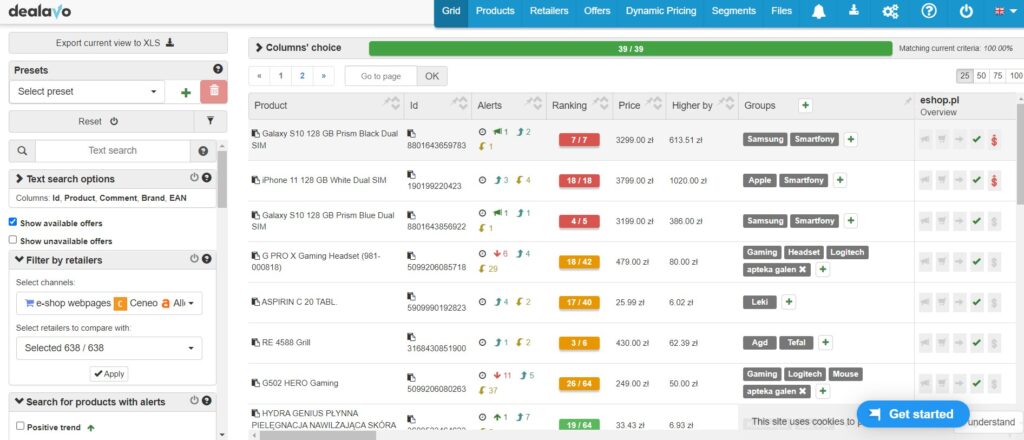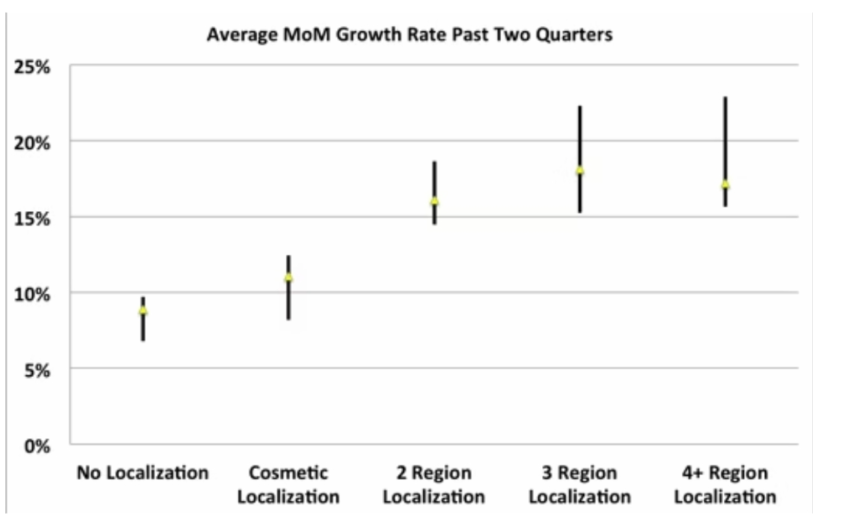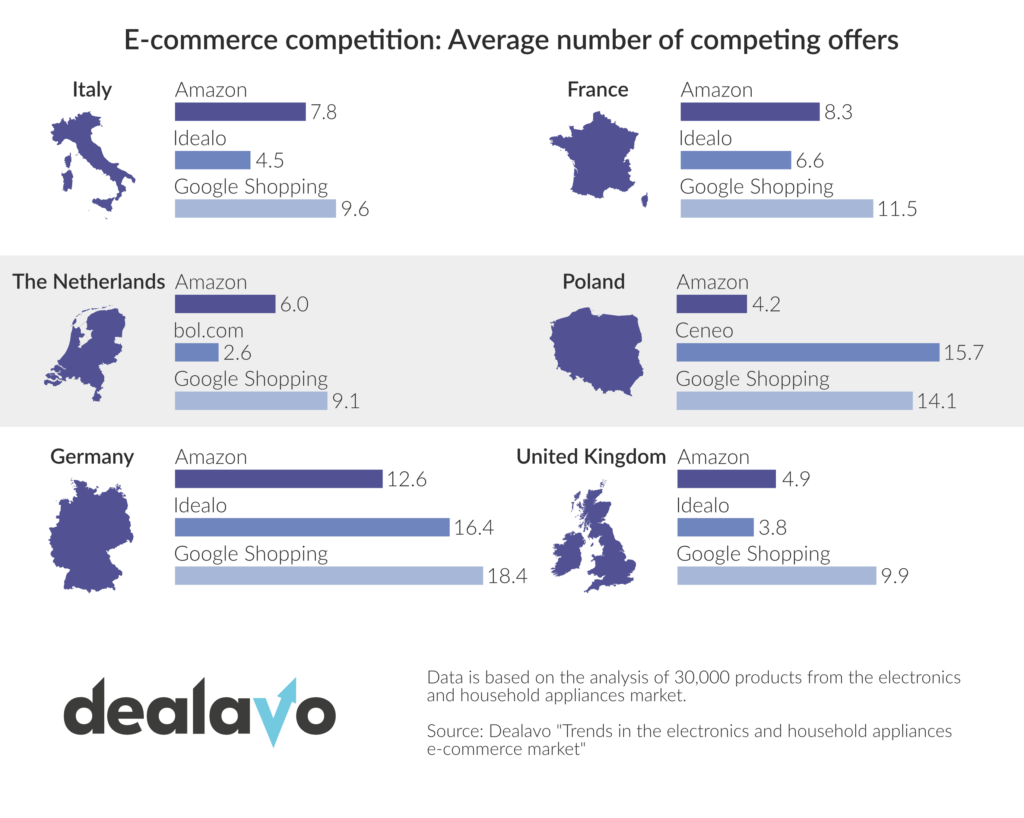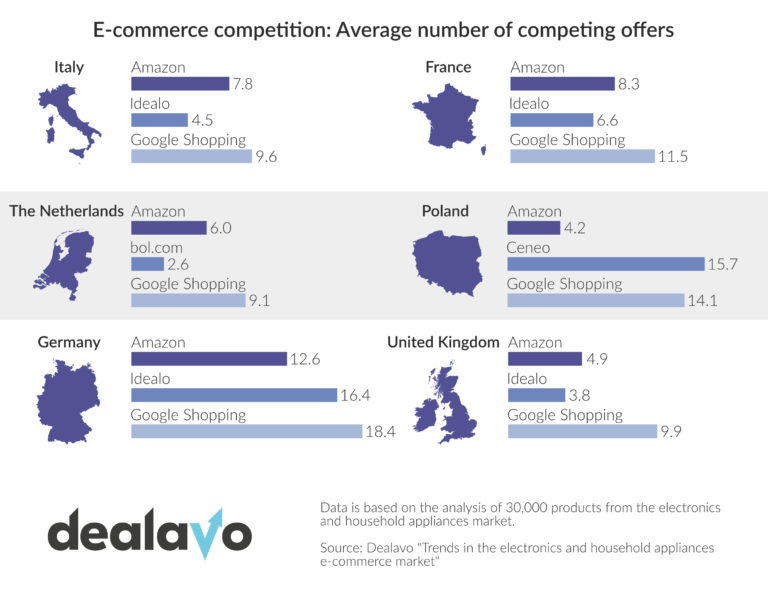
The Power of Price Localization: Capture Global Markets
- 24 May 2023
With the global economy continuing to expand, pricing localization has become an important strategy in competition and growth for international ecommerce companies. In this blog post, we’ll discuss why you should consider adopting a localized pricing approach when expanding into new markets, what factors you need to take into consideration when determining pricing strategies, and how successful implementation of these strategies can result in increased market share and higher profits. Read on to discover the principles behind successful pricing localization!
What is Price Localization, and How Does It Help You Reach a Wider Audience?
Price localization involves adapting product prices to specific markets or regions, considering factors such as:
- local purchasing power,
- competition,
- consumer preferences.
By tailoring prices to each target market, companies can effectively penetrate new territories, attract more customers, and boost their overall sales.
What are the Types of Price Localization?
When it comes to implementing price localization strategies, businesses can adapt various approaches. These types of price localization enable companies to address the needs of various markets.
Currency Conversion
Currency conversion is a common type of price localization. It entails converting the original price of a product into the local currency of the target market. This practice ensures that customers can easily understand and compare prices without the hassle of currency conversions themselves.

The differences between three dollar currencies and their fluctuations
Source: https://www.chargebee.com/blog/multi-currency-support/
Geographical Pricing
Geographical pricing is another strategy companies use for price localization. It involves adjusting prices based on the geographical location of customers. For instance, companies may offer lower prices in regions with lower income levels or higher competition, while maintaining higher prices in affluent or high-class markets.
Dynamic Pricing
Dynamic pricing is an approach that leverages real-time data and algorithms to adjust prices dynamically. This type of price localization takes into account factors such as demand, seasonality, or even individual customer behavior.
Dynamic pricing enables companies to optimize their prices in response to market conditions, ensuring competitiveness and maximizing revenue. Check out the Dynamic Pricing functionality in Dealavo to adapt to the frequent market changes even faster.

Dealavo offers Dynamic Pricing feature
Source: https://dealavo.com/en/what-is-dynamic-pricing-and-how-does-it-work/
Bundling and Discounts
Companies can also implement region-specific bundles or discounts as part of their price localization strategy. By tailoring their special offers to the preferences and buying patterns of different markets, businesses can incentivize customers to make purchases, thereby increasing their market share.
How Price Localization Can Improve Your Business’s Revenue & Performance?
The implementation of price localization strategies can have a significant impact on the revenue and overall performance of many businesses. Let’s explore the key ways in which price localization can contribute to the growth and success of your business.
Gaining a Competitive Advantage
Price localization provides businesses with a competitive edge. By tailoring prices to local markets, companies can position themselves as more attractive options by offering prices that are perceived as fair and aligned with local purchasing power.
This can give them an advantage over competitors and capture a larger market share.
Driving Increased Sales
One of the significant benefits of price localization is its potential to drive increased sales. By adapting prices to match local preferences and affordability, companies can attract more customers who might have been deterred by higher prices.
The expanded customer base can result in a boost in sales and revenue.

The effect of implementing price localization over several months
Source: https://www.paddle.com/blog/saas-localized-pricing
Enhancing Customer Satisfaction
When customers perceive prices as fair and reasonable, they are more likely to have positive experiences with a brand. Price localization contributes to customer satisfaction by aligning prices with local market expectations and purchasing power.
Satisfied customers are more likely to become loyal to a brand, leading to repeat purchases and positive word-of-mouth referrals.
Optimizing Revenue
Price localization enables businesses to optimize their revenue. Through dynamic pricing and data-driven insights, and in order to set prices that maximize profitability, companies can run analyses of the:
- market trends,
- demand patterns,
- customer behavior.
This ensures that prices are competitive, and companies can capture the full potential of each market they operate in.
How to Develop a Successful Price Localization Strategy?
Developing a successful price localization strategy requires careful planning and consideration. Here are essential steps to guide you in formulating an effective approach.
Conduct Market Research
The first step in developing a price localization strategy is conducting thorough market research. Gain a comprehensive understanding of the dynamics, purchasing power, and consumer behavior in your target markets.
Identify any unique factors that might influence pricing decisions, such as local preferences or cultural nuances.

The role or market research
Source: https://marketsplash.com/market-research/
Analyze Competitor Strategies
Perform a comprehensive analysis of your competitors’ pricing strategies in each market. This analysis will help you identify pricing gaps, opportunities, and potential benchmarks.
Understanding how your competitors position themselves in terms of pricing can inform your own strategy and give you a competitive advantage.
Define Pricing Objectives
Set clear pricing objectives based on your business goals and market analysis. Determine whether your focus is on market penetration, maximizing revenue, gaining market share, or a combination of these factors.
Clearly defining your pricing objectives will guide your decision-making throughout the localization process.
Adapt Pricing Structures
Based on your market research and pricing objectives, adapt your pricing structures to fit each target market. Consider factors such as:
- local purchasing power,
- competition,
- customer expectations.
It may be necessary to adjust product pricing, discount levels, or bundle offerings to align with market conditions and increase customer appeal.
Utilize Technology and Data
Leverage pricing technology and data analysis tools to support your price localization efforts. These tools can help you gather and analyze market data, monitor competitor prices, and track customer behavior.
By leveraging technology, you can make data-driven pricing decisions and quickly adapt to market changes.
When strategizing for social media outreach, prioritize small businesses that heavily rely on their social media presence as the primary means of communication with customers, rather than relying on their website.
On Facebook, for example, you can run ads displaying different pricing models based on customer location. So, you would want to be offering lower prices in areas of high competition, like New York City or London, and higher prices in areas of lower competition.

Facebook’s map for targeting ads works intuitively
Source: https://www.socialmediaexaminer.com/how-to-target-local-customers-with-facebook-ads/
Price localization – examples
To illustrate the practical application of price localization, let’s explore a few examples across different industries.
Currency Conversion (Electronics Industry)
In the electronics industry, companies often implement price localization by adjusting prices based on currency conversion and local market conditions. For instance, a global smartphone manufacturer may offer different price points for their devices in different regions to cater to varying purchasing power and local competition.
Dynamic Pricing (E-commerce Platforms)
E-commerce platforms utilize dynamic pricing as a price localization strategy. They analyze real-time data, such as demand fluctuations and competitor prices, to dynamically adjust prices for products. This allows them to optimize revenue and offer competitive prices to customers in different markets.
Geographical Pricing (Gasoline Industry)
Geographical pricing strategy is when you adjust your prices according to the location of your customers.

Geographical pricing for hotels by Travel Tripper
Source: https://www.pegs.com/blog/geographic-pricing-in-its-reztrip-crs/
It’s a common thing in the gasoline industry. Oil companies often charge various gas stations differently, depending on where they are located, although all of them sell the same type of gasoline. This specific subtype of geographical pricing is called “zone pricing,” and in this case, it may concern such factors as the intensity of traffic or the average income per household in the closest neighborhood.
Price localization and price monitoring – why should they go hand in hand?
Price localization and price monitoring are closely related and should be integrated into an effective pricing strategy. Here’s why:
Competitive Insights
Price monitoring allows businesses to gain valuable insights into their competitors’ pricing strategies.
By monitoring competitor prices in different markets, companies can adjust their own prices to maintain competitiveness and ensure their price localization efforts are effective.
Market Dynamics
Price monitoring helps companies stay updated on market dynamics, including changes in consumer behavior, purchasing power, and competitor actions.
This information is crucial for successful price localization as it enables businesses to adapt their pricing strategy to evolving market conditions and make informed pricing decisions.
Pricing Optimization
Price monitoring provides businesses with the necessary data to analyze the effectiveness of their price localization strategy.
By tracking the performance of localized prices and comparing them to key performance indicators, companies can identify areas for improvement and optimize their pricing approach to maximize revenue and profitability.
Reacting to Price Changes
In a dynamic marketplace, prices can fluctuate rapidly due to various factors such as supply and demand, competitor actions, or economic conditions.
Price monitoring enables businesses to quickly identify these price changes and adjust their localized prices accordingly. This agility ensures that companies can maintain competitiveness and seize opportunities in the market.
Identifying Opportunities and Risks
Price monitoring allows companies to identify emerging market trends and customer preferences. By tracking pricing data and consumer behavior, businesses can uncover opportunities for new localized pricing strategies or identify potential risks and challenges that may impact their price localization efforts. You can use the Dealavo Price Monitoring tool for better control over your products’ pricing.
Learn more about Dynamic Pricing
Continuous Improvement
Price localization and price monitoring require continuous evaluation and improvement. You do this by analyzing:
- pricing data,
- market trends,
- customer feedback,
- local competition’s pricing strategies.
This ongoing monitoring and refinement ensure that price localization efforts remain effective and aligned with the evolving needs of the target markets.
Summary
Price localization is an effective technique for any company to optimize its prices and maximize its profits. With the help of special applications, such as dealavo, companies can accurately track purchase data and identify optimal pricing strategies. This is a forceful weapon that enables businesses to seize every profit opportunity in different markets across the globe. Companies should embrace this tool for their revenue growth, expansion of customer base, and performance enhancement. Proper assessment of the local markets, currency exchange rates, and variable customer demands with the help of price localization techniques can enable businesses to achieve unimaginable levels of success. So, don’t wait any longer. Start acting now and leverage the power of price localization today!





